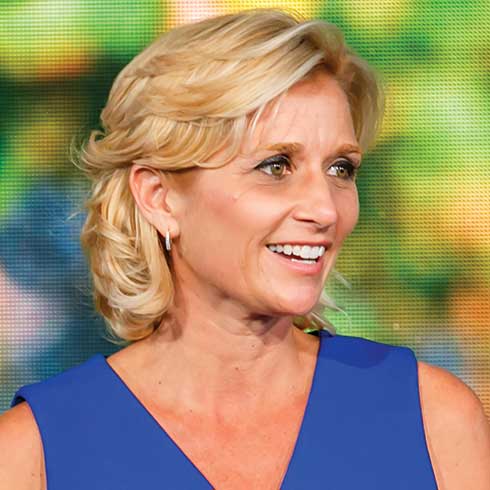
The theme of this year’s International Women in Engineering Day (INWED), on Sunday, June 23, is “Enhanced by Engineering,” highlighting the achievements and accomplishments of women engineers.
In alignment with that theme, here is a look at women in computer science and IT throughout history — and today — who have shaped technology as we know it.
“Happy International Women in Engineering Day to all the women who have overcome gender stereotypes, who have pursued their passion in engineering despite barriers, and who have excelled in their careers. Thank you for being an inspiration to the next generation of young girls breaking into tech and STEM,” said ChanChan Mao, developer advocate at Alluxio.
Here are just a small number of the women who have shaped the technology of our world.
Ada Lovelace, born in 1815, was a mathematician who studied under Charles Babbage, who is considered to be the “father of the computer.” It is believed that she wrote the first computer program ever in a series of notes on the Analytical Engine, either in 1842 or 1843. However there is debate among historians that Babbage might have done so first a few years earlier.
The daughter of English poet Lord Byron, Lovelace was creative herself, and much of her research was on how society and humans relate to technology, whereas previous work only focused on the technical aspects.
She once wrote: “[The Analytical Engine] might act upon other things besides number, were objects found whose mutual fundamental relations could be expressed by those of the abstract science of operations, and which should be also susceptible of adaptations to the action of the operating notation and mechanism of the engine…Supposing, for instance, that the fundamental relations of pitched sounds in the science of harmony and of musical composition were susceptible of such expression and adaptations, the engine might compose elaborate and scientific pieces of music of any degree of complexity or extent.”
Grace Hopper, born in 1906, was a computer scientist who spent time working for the United States Navy. She developed the theory of machine-independent programming languages, then used that theory to develop both the FLOW-MATIC and COBOL programming languages. She was also a member of the team at Eckert–Mauchly Computer Corporation that developed the UNIVAC I computer, which was the first electronic computer designed for business use.
She received 40 honorary degrees throughout her life, and following her death in 1992, she received the Presidential Medal of Freedom in 2016, had a building named after her at Yale University in 2017, and one of the largest women-focused tech conferences, Grace Hopper Celebration, is named for her as well. And, she attained the rank of rear admiral before retiring from the Navy at age 79.
Sister Mary Kenneth Keller, born in 1913, was the first woman in the United States to earn a Ph.D. in computer science in 1965 and throughout her career she advocated for women in tech.
The year she earned her doctorate, she founded the computer science department at Clarke University and was awarded a $25,000 grant from the National Science Foundation to spend on instructional equipment. She was the director of that department for 20 years and it has since been renamed the Keller Computer Center and Information Series for her. Later on, she also established the Association of Small Computer Users in Education (ASCUE).
Hedy Lammar, born in 1914, was an actress and inventor who created a key part of the technology we use in modern Wi-Fi, Bluetooth, and GPS technologies. During World War II, she worked with music composer George Antheil on technology that would allow Britain to destroy German ships. The challenge was in preventing the Germans from simply jamming their radio signals to prevent it, and what Antheil and Lammar came up with was the idea of frequency hopping, where a signal jumps to a new frequency every split second, preventing anyone trying to jam the signal from being able to figure out where it is.
The two actually pitched this idea to the U.S. Navy, but were rejected. The idea of frequency hopping lived on, however, decades later with the emergence of car phones and then cell phones. In the 1990s, frequency hopping was so crucial to communications that the FCC made it a standard for secure radio communications.
Elizabeth Feinler, born in 1931, worked on ARPANET, which was a network that preceded the Internet today. In 1974 she was made principal investigator to plan and run the network’s Network Information Center (NIC), which was essentially a “Yellow Pages” for people on the network. Her team was also responsible for developing the name scheme for top-level domains, such as .com, .edu, .gov, .mil, .org, and .net.
Margaret Hamilton, born in 1936, was a computer scientist crucial to space exploration in the United States. She was the first programmer on the Apollo project at MIT, ultimately becoming Director of the Software Engineering Division. She and her team were responsible for writing the in-flight software on the Apollo rocket.
After that, she went on to form two technology companies: Higher Order Software, working on error prevention and fault tolerance, and then Hamilton Technologies, which focused mostly on developing technology around the Universal Systems Languages. She’s also credited as being the person to come up with the name “software engineering.”
Adele Goldberg, born in 1945, co-developed the Smalltalk-80 programming language, which is an object-oriented language designed to be simple for educational use. This language, while not the most popular anymore, is the basis for many modern languages we have today, including C, Java, and Python.
She was also the president of the Association for Computing Machinery (ACM) from 1984 to 1986, and has a portion of the Computer History Museum dedicated to showcasing her work on Smalltalk.
Anita Borg, born in 1949, was a computer scientist known for her efforts advocating for women in technology. Her goal, set in 1995, was that by 2020, 50% of tech workers would be women (it ended up only being 28% by then). She founded Systers, an email network for women in tech;
The Grace Hopper Celebration of Women in Computing conference; and the Institute for Women and Technology, which has since been renamed AnitaB.org.
Radia Perlman, born in 1951, invented several technologies crucial to the internet as we know it. Notably, she invented the Spanning Tree Protocol (STP), which allows networks to be designed with redundant links so that if a link fails, it can switch to a backup.
She also developed a number of other network protocols, including DECnet IV and V and IS-IS, and has over 100 patents in her name.
Susan Kare, born in 1954, is a graphic designer who designed some of the most iconic graphics we still see today, notably the fonts, icons, and graphics for the original Apple Macintosh computer in 1983. She also developed the core visual design language for that computer. After leaving Apple she went on to produce recognizable graphics for companies such as Microsoft, IBM, Sony, Motorola, and Intel. Currently, she is the design architect for Niantic Labs, the company that makes Pokémon Go.
“This day provides us with a moment to reflect on the progress women have made and the opportunities ahead,” said Elisa La Roche, senior director of support engineering at Starburst. “It is because of the female innovators before us that we are able to work for companies with diverse workforces that generate more innovative ideas, engage in better collaborative decision-making, and execute with higher quality outcomes as a result of the unique skills and mindsets of each individual.”
You may also like…
How we can better support women in tech
Grace Hopper Celebration is more than just a tech conference





